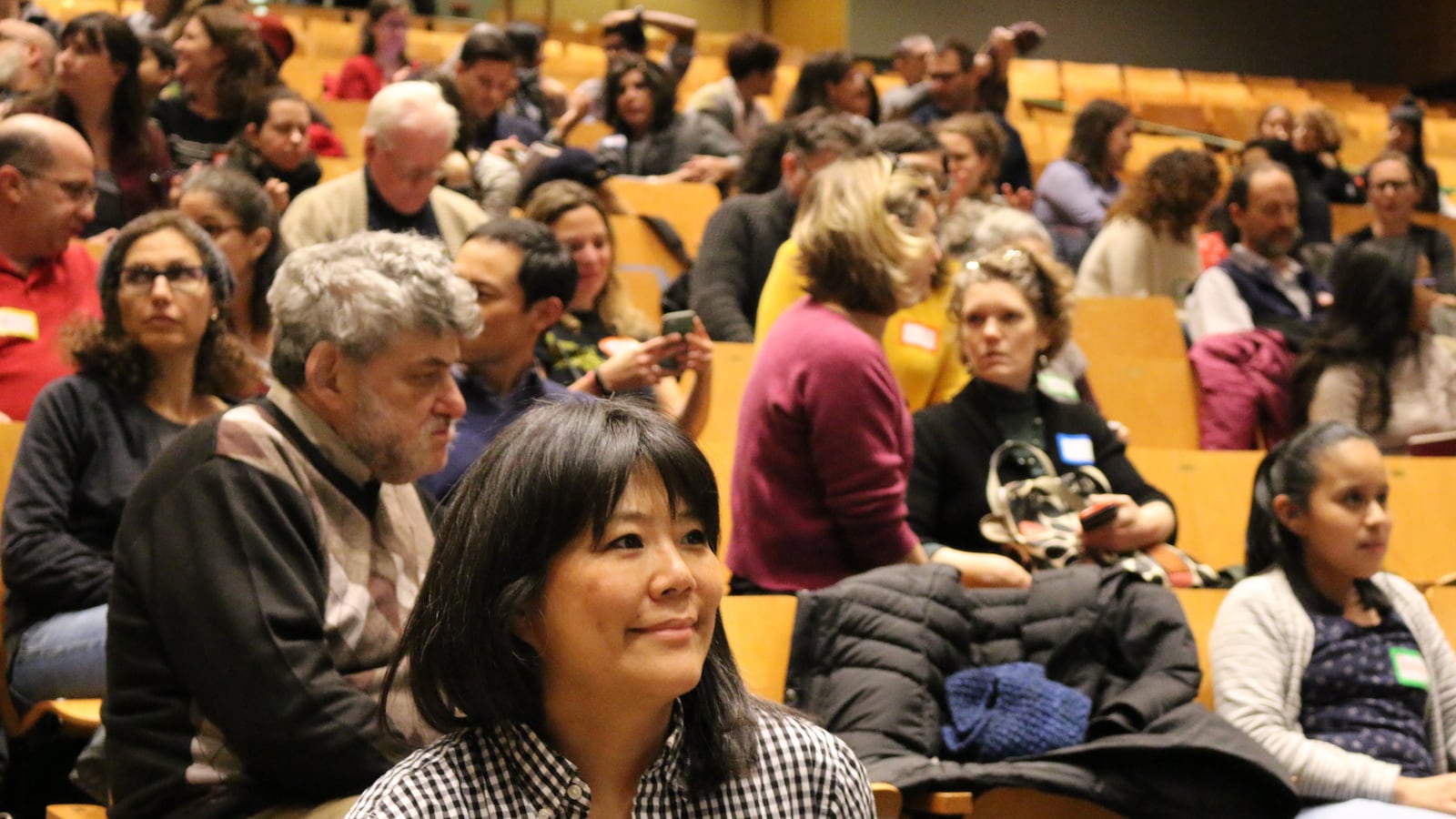Some of New York City’s most sought-after middle schools could begin to dramatically reshape their student bodies as high-profile integration efforts in two districts appear to be making an impact, according to data released Monday by the education department.
Most of the schools in Brooklyn’s District 15 and Manhattan’s District 3 offered admission to a more diverse range of students for the upcoming school year, the first test of whether hotly debated admissions changes piloted this year are working.
[See how much each middle school might change here.]
The results are only preliminary though: Families could ultimately choose to enroll in different schools. Families have until May to appeal.
This year’s admissions offers show potential for dramatic changes both at popular schools and those that have flown under the radar of more affluent, white families.
In Brooklyn, M.S. 51 William Alexander could enroll a sixth-grade class where 57 percent of students are needy, up from just 33 percent last year. In Manhattan, P.S. 180 Hugo Newman could serve far fewer students who are struggling in the classroom and come from low-income families, with just 40 percent of offers going to those students this year — down 28 points from last year.
“Our schools are stronger when they reflect the diversity of our city,” schools Chancellor Richard Carranza said in an emailed statement. “Today we’re seeing the first impact of community-driven efforts to integrate our schools.”
The results are important because both districts have been seen as pioneers for integration models that could spread to other parts of the city. The proposed changes caused an uproar in Manhattan, where one mother’s protest that high-achieving students would be elbowed out of the most selective schools went viral, and prompted more muted concerns in Brooklyn.
Families in both districts apply to middle schools rather than being assigned a neighborhood school based on where they live.
Encompassing brownstone neighborhoods such as Park Slope and immigrant enclaves such as Sunset Park, District 15 undertook what is probably the most dramatic integration plan approved yet by the city. This year, the district’s 11 middle schools eliminated screens — selective admissions criteria that allow schools to pick students based on factors such as test scores, report card grades, and interviews.
Instead, families applied to the schools of their choice and admissions were determined by a lottery, with preference for 52 percent of seats given to students who come from low-income families, are learning English as a new language, or are homeless. The aim is for all schools in the district to enroll a similar share of needy students. Since race and ethnicity are tightly tied to economic status, the hope is that the schools will become more diverse on a range of measures.
At M.S. 447 The Math & Science Exploratory School, half of the admissions offers went to needy students — a nearly 20 point increase over last year. At New Voices School of Academic & Creative Arts, 55 percent of offers went to the priority group, compared to 26 percent previously. Both have been among the most coveted schools in the district — and the least reflective of local demographics.
There was also progress towards breaking up concentrations of deep need in schools. At I.S. 136 Charles O. Dewey, for example, there was a 24 percentage point decline in the number of needy students offered admission. At Sunset Park Prep, the drop was 11 percent. Even with the changes, both would continue to serve mostly students who come from low-income families.
Still, Brooklyn parent Carrie McLaren, who helped craft the integration plan, said she is hopes the admissions changes will encourage parents to consider a wider range of schools.
“That’s my hope for this plan is that it changes what everyone thinks a good school is,” she said. “A lot of times when you get people in the door, their whole frame changes.”
In District 3, which spans the Upper West Side and part of Harlem, the admissions changes were more modest. Middle schools gave priority for a quarter of their seats to students who come from low-income families, struggle on state tests, and earn low report card grades.
At J.H.S. 054 Booker T. Washington, 18 percent of students offered admission come from needy families and struggle in the classroom — an eight point increase over last year. The Computer School increased its offers to those students by just 2 percentage points, up to 20 percent, despite strong support from that school’s principal for integration efforts.
There were more dramatic swings at schools where most students have historically struggled, such as West Prep Academy and Community Action school. Those saw offers to students with low test scores and report card grades drop by 24 points and 14 points, respectively.
“I’m really happy that we are moving closer to the district average, which is part of the goal, and that we’re seeing movement at the high demand schools, and at the lower demand schools — which is crucial,” said Kristen Berger, a member of the District 3 Community Education Council who pushed for the admissions changes. “The point of this complex system is that we’re not just building one great school but we’re working as a system across the district.”


